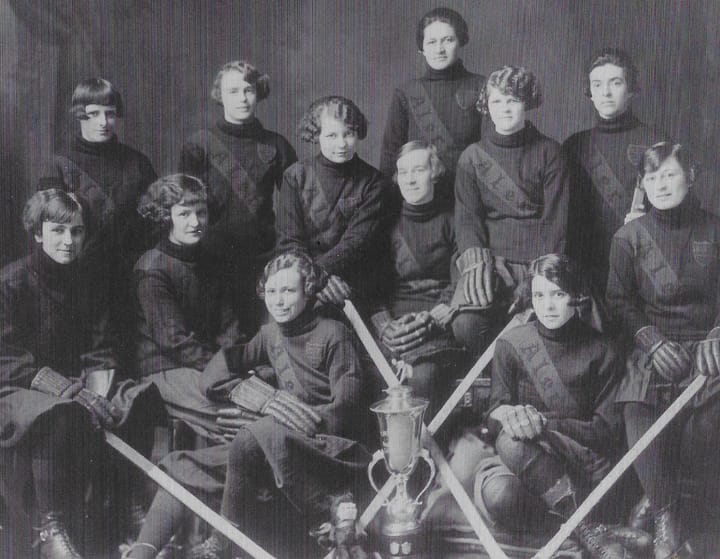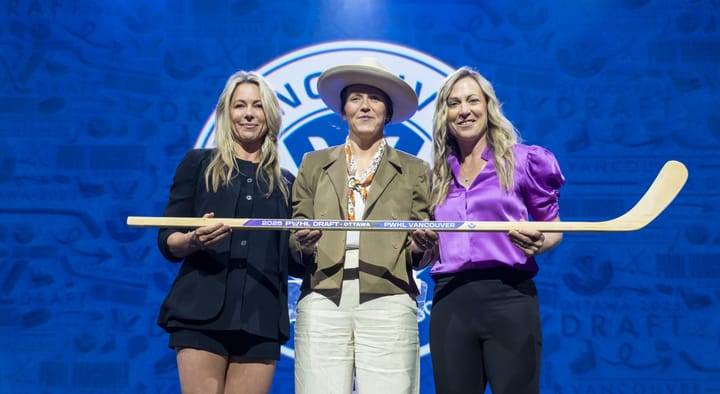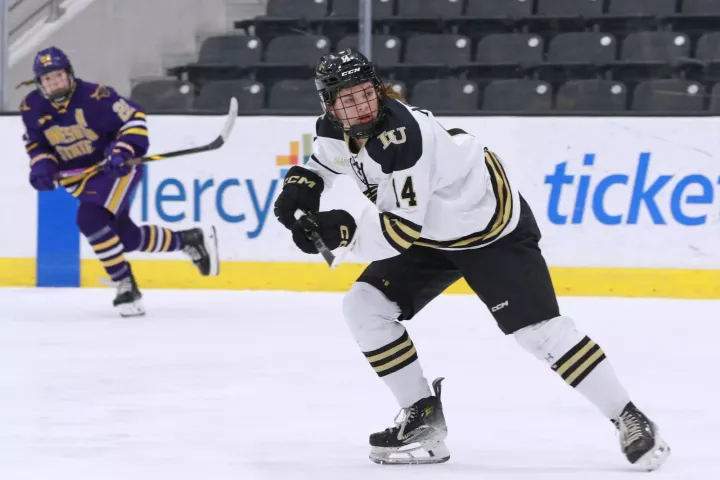Women's Hockey 101: CWHL Draft
The history and rules behind the CWHL Draft, including how to follow along this year.
Starting this season, we’re introducing a series titled “Women’s Hockey 101.”
Our goal is to make women’s hockey more accessible for everyone, from brand new fans to seasoned women’s hockey vets. We know a lot of people who want to get into women's hockey but don't know where to start. There are an awful lot of leagues, teams, player, tournaments, etc. to keep up with, and it’s our mission to give you all the basics about everything women’s hockey.
No matter where you are in your women’s hockey fandom, keeping up with everything can be hard, and we want to make your lives easier. Welcome to Women’s Hockey 101!
History
The CWHL Draft started in 2010, though the CWHL was already three years old at that time.
Only three teams — Brampton, Burlington, and Toronto — drafted players in the 2010 draft; Montreal and Boston did not draft, instead just signing players as teams had done previously.
During the first draft, teams were also allowed to protect five players who had been in the league for at least one year from being entered into the draft.
Tessa Bonhomme was the first overall draft pick in league history, going to the Toronto Furies. In total, 50 players were drafted in 2010.
Starting in 2018, teams are able to pre-sign their first and second round picks ahead of the draft. Due to the Erin Ambrose trade last season, Toronto has three picks while Montreal has one.
Because there are so many players drafted each year, we're not going to copy and paste every draft pick into this article. There are, however, some fabulous comprehensive Wikipedia pages that have all the draft picks listed, which we'll link to here:
Milestones
Notable milestones in the league's draft history include:
2010: Tessa Bonhomme becomes the first player drafted in CWHL history when she is selected by the Toronto Furies.
Yekaterina Smolenstseva becomes the first Russian-born player selected and is picked up by Brampton.
Danijela Rundqvist and Michele Janus become the first Sweden-born players selected, both going to Burington.
2011: Anniina Rajahuhta becomes the first Finnish-born player drafted and is chosen by Burlington.
2012: Hillary Pattenden becomes the first goaltender selected first overall when she's drafted by the Calgary Inferno.
Florence Schelling becomes the first Swiss-born player selected in the draft, going to Montreal.
2013: Jessica Wong becomes the first person of color to be selected first overall in the draft, going to the Calgary Inferno. When teammate Katie Wilson is drafted second to the Toronto Furies, it becomes the first time that two NCAA teammates (both played at UMD) went 1-2 in the draft.
Blake Bolden, who was drafted by the Boston Blades, became the first African-American player to be selected in the first round.
Ding Xiaolin becomes the first Chinese-born player to be drafted and is selected by Boston.
Georgia Moore was also the first Australian-born player to be drafted, going to Calgary (though she is also listed as one of Calgary's draft picks in the the 2011 draft).
2014: Aina Takeuchi becomes the first Japanese player drafted, also by Calgary.
2016: Claudia Tellez becomes the first Mexican-born player selected in CWHL history when the Inferno draft her.
2017: A record number of players were drafted — 105. Draftees came from a variety of countries including Turkey, Kazakhstan, Russia, and New Zealand.
How it works
In order to register for the CWHL Draft, players have to meet certain requirements. Players must:
- Be at least 20 years old by January 1 of their draft year (exemptions may be granted).
- Not have previously signed a contract with a CWHL club.
- Not be on the reserve list of any club.
- Not be committed to any NCAA or USPORT program.
- Register for the draft themselves before a specified deadline.
- Pay a fee in order to register ($150 CAD).
Because players often (read: almost always) need second jobs to supplement their income, an additional rule to the draft allows for players to pre-select teams they are willing or able to play for. Players are allowed to pick up to three locations — Boston, Montreal, Calgary, GTA (both Toronto and Markham, counts as two locations), and now China — that they're willing to be drafted by. Teams are only able to select players who have chosen their location.
As a result, most of the draftees already know where they'll go before draft day. The exceptions are if players have marked more than one location or if they've chosen the GTA, in which case either Markham (formerly Brampton) or Toronto would be able to select them.
Starting in 2018, teams were able to pre-sign their first and second round picks ahead of the draft. Due to the Erin Ambrose trade last season, Toronto has three picks while Montreal has one.
Draft order is determined by regular season standings from the previous year. In 2017, the two newest expansion teams, Kunlun Red Star and Vanke Rays, selected sixth and seventh.
Every player who registers will be drafted by a team.
And there's this lovely graphic showing this year's CWHL draft order: Kunlun Red Star will draft sixth, Vanke Rays are seventh. pic.twitter.com/kIj3ZiHGqC
— The Ice Garden (@TheIceGarden) August 15, 2017





Comments ()